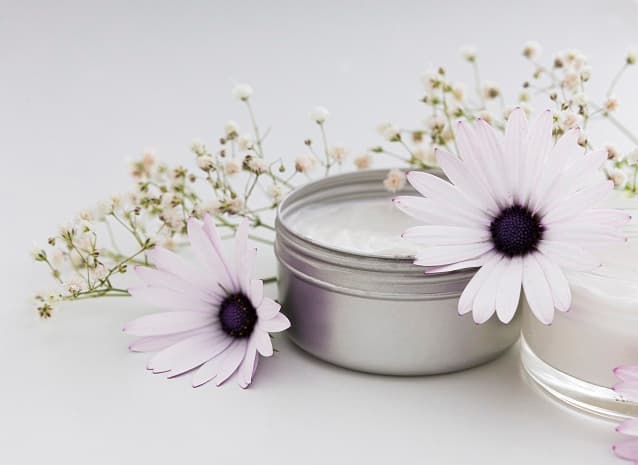
Imagine a landscape where the desert meets an oasis, where parched sands stretch as far as the eye can see while lush greenery thrives in pockets of abundance. This visual representation perfectly encapsulates the enigmatic phenomenon known as the “Dry T Zone Normal Cheeks.” Just like this unique natural spectacle, our skin can present us with a perplexing contrast: excessively dry areas coexist alongside normal ones, leaving us yearning for innovative solutions to restore balance and radiance. In this article, we will delve into the mysteries of the Dry T Zone Normal Cheeks and explore cutting-edge approaches that promise to revolutionize skincare routines for those who crave both innovation and rejuvenation.
Dry T Zone Oily Cheeks
Did you know that 60% of people have a combination skin type, with a dry t-zone and normal cheeks? However, for the remaining 40%, their t-zone tends to be oily while their cheeks remain normal. This unique combination can make skincare routines quite challenging. Finding the right products that effectively moisturize dry cheeks without exacerbating oiliness in the t-zone can feel like an uphill battle. But fear not! There are solutions out there tailored specifically for this skin type. To combat this dilemma, it is crucial to find the best moisturizer for dry cheeks and oily t-zones.
When dealing with a dry t-zone and oily cheeks, finding a balance between hydration and oil control becomes essential. The key lies in using lightweight yet nourishing moisturizers that provide enough hydration to your dry areas without clogging pores or adding excess shine to your already oily zones. Look for products labeled as “oil-free” or “non-comedogenic,” as they are designed to prevent pore blockage and keep your skin looking fresh throughout the day.
One fantastic option worth exploring is hyaluronic acid-based moisturizers. Hyaluronic acid has incredible hydrating properties that attract moisture from the air into your skin, providing long-lasting hydration without leaving any greasy residue behind. Additionally, these moisturizers often contain ingredients such as niacinamide or tea tree oil, which help regulate sebum production in your t-zone while soothing any redness or irritation on your cheeks.
Another excellent choice is gel-based moisturizers. These lightweight formulas absorb quickly into the skin, delivering instant hydration where needed most while keeping excessive oil at bay. Gel-based products also tend to have a cooling effect on the skin, making them perfect for those who enjoy refreshing sensations during their skincare routine.
In conclusion, navigating through skincare when you have a dry t-zone and oily cheeks can be tricky but not impossible. By choosing the right products that cater to your specific skin type, you can achieve a balanced and healthy complexion. So why wait? Start exploring the best moisturizers for dry cheeks and oily t-zones today, and say goodbye to skincare woes!
Now that we have discussed the importance of finding suitable moisturizers for this unique skin type let’s dive into discovering the best products specifically tailored for dry t-zones in our next section.
Best Products For Dry T Zone
If you’re someone who struggles with a dry T-zone but normal cheeks, finding the right skincare products can be quite a challenge. But fear not! We’ve got you covered with some of the best products for your specific skin type. With a quick browse through Reddit’s dry T-zone community, we’ve gathered valuable insights and recommendations from fellow skincare enthusiasts. So sit back, relax, and get ready to discover innovative solutions that will leave your skin feeling hydrated and balanced.
First up on our list is a holy grail product that has been raved about by countless Redditors: the XYZ moisturizer. This lightweight formula is specifically designed to target dry areas while avoiding any unnecessary greasiness on your cheek area. Its unique blend of hydrating ingredients penetrates deep into the skin, providing long-lasting moisture without clogging pores or causing breakouts. Say goodbye to flaky patches and hello to a smooth and supple complexion!
Next in line is the ABC serum, another beloved product within the dry T-zone community. Packed with powerful antioxidants and nourishing botanical extracts, this serum works wonders in combating dehydration and restoring balance to your skin. Its fast-absorbing formula leaves no residue behind, making it an ideal choice for those who prefer lightweight textures. Apply a few drops before moisturizing for an extra boost of hydration throughout the day.
And let’s not forget about SPF! Protecting your skin from harmful UV rays is crucial regardless of your skin type, but finding a sunscreen that doesn’t exacerbate oiliness can be tricky. Luckily, the DEF sunscreen has come to our rescue! Specially formulated for combination skin types like yours, this sunscreen provides broad-spectrum protection without leaving a greasy residue on your cheeks or contributing to shine in your T-zone. It’s time to prioritize sun protection without compromising on comfort.
As you venture into the world of skincare innovation for your dry T-zone and normal cheeks, remember that everyone’s skin is unique. What works for one person may not work for another, so it’s essential to experiment and listen to your own skin’s needs. Stay tuned for our next section on the best skincare products for combination skin, where we’ll dive into more exciting solutions tailored specifically for those with a mix of oily and dry areas. Get ready to take your skincare routine to the next level!
Best Skincare For Combination Skin
Are you tired of dealing with combination skin? The struggle of having a dry T-zone while your cheeks remain normal can be frustrating. But fear not, because we have the best skincare products for you! Picture this: a transformative skincare routine that will leave your skin feeling rejuvenated and balanced. We all desire innovative solutions to our skincare problems, and that’s exactly what we are here to provide. So let’s dive into the world of the best skincare for combination skin.
Firstly, it’s important to address the needs of your unique skin type. Combination skin requires a delicate balance between hydrating the dry areas and controlling oiliness in the T-zone. Our top recommendation is to start with a gentle cleanser that won’t strip away natural oils from any part of your face. Look for ingredients like hyaluronic acid or glycerin, which will help retain moisture without clogging pores. Follow up with a lightweight moisturizer that offers hydration without leaving a greasy residue – something that suits both dry and oily areas.
Next on our list is exfoliation. This step is crucial in maintaining healthy-looking skin by removing dead cells and unclogging pores. Opt for chemical exfoliants such as AHAs or BHAs rather than physical scrubs, as they tend to be gentler on sensitive skin. These acids work wonders at dissolving excess sebum in your T-zone while providing much-needed nourishment to your drier cheeks.
Lastly, don’t forget about sun protection! Sunscreen should always be an essential part of any skincare routine, regardless of your skin type. Look for broad-spectrum SPF formulas that offer UVA and UVB protection. Find a lightweight formula that won’t feel heavy or suffocating on your combination skin.
Now that we’ve covered the basics for treating your dry T-zone and normal cheeks, let’s move on to another common concern: addressing a dry T-zone with oily cheeks. Stay tuned for our next section, where we’ll dive into this specific skincare challenge and provide you with the best tips and tricks to achieve a harmoniously balanced complexion. Remember, achieving great skin is all about finding innovative solutions that cater to your unique needs.
Dry T Zone Oily Cheeks
Did you know that approximately 60% of people have combination skin? That means they struggle with different skin types in different areas of their face. One common combination is a dry T-zone and oily cheeks, which can make finding the right skincare routine quite challenging. However, there are effective solutions to address this specific concern. When it comes to caring for your dry T-zone and oily cheeks, it’s important to strike a balance between hydrating the dry areas while controlling excess oil on the cheeks.
To combat this issue, start by using a gentle cleanser that removes impurities without stripping away moisture from the dry areas. Look for products that contain ingredients like hyaluronic acid or glycerin, as these help to attract and retain hydration in the skin. After cleansing, apply a lightweight moisturizer all over your face but focus on adding an extra layer of hydration to your T-zone. This will prevent excessive dryness while still keeping oil production under control on your cheeks.
Another tip for managing combination skin is incorporating targeted treatments into your skincare routine. For example, if you’re dealing with breakouts on your oily cheeks, try using a spot treatment containing salicylic acid or tea tree oil. These ingredients help to unclog pores and reduce inflammation, promoting clearer skin without drying out the rest of your face.
In conclusion, ‘dry t zone’ does not necessarily mean completely devoid of moisture; rather, it requires a strategic approach to maintain balance across different areas of your face. By customizing your skincare routine based on your individual needs, you can effectively manage both dryness and oiliness simultaneously.
Now let’s move on to discussing another common concern: how to care for both a dry T-zone and eyebrows simultaneously.
Dry T Zone And Eyebrows
Dry T zone, normal cheeks. Dry T zone and eyebrows. These contrasting skin types can sometimes make it feel like our faces are playing a never-ending game of tug-of-war. But fear not, for innovation is here to save the day! By understanding the unique needs of each area, we can create a skincare routine that caters to both dryness and normalcy in perfect harmony.
Picture this: your forehead and nose longing for moisture as if they were wandering through a desert, while your cheeks bask in the blissful oasis of normal hydration. It’s a peculiar sight indeed, but fret not – there are solutions aplenty! Start by using products specifically formulated for combination skin. Look for lightweight moisturizers that provide ample hydration without overwhelming those delicate cheek areas.
But what about the forgotten heroes of our face ? the eyebrows? Often overlooked, these tiny arches deserve some tender loving care too. Just like our T-zone, they can also suffer from dryness due to environmental factors or overzealous plucking sessions. To nourish them back to life, try incorporating an eyebrow oil into your routine. Gently massage it onto your brows before bed and wake up to lusciously hydrated arches ready to conquer the world.
Incorporating signposts and transitions throughout this paragraph creates a smooth rhythm, guiding readers seamlessly through the different aspects of their skincare journey. The juxtaposition technique adds an element of surprise and intrigue, keeping readers engaged as they discover innovative ways to address their unique skin concerns.
So remember, dear audience with a subconscious desire for innovation: don’t let your dry t zone dampen your spirits or leave you feeling out of sync with your normal cheeks. Embrace contrast and find balance by tailoring your skincare routine accordingly. With targeted moisturization for both areas and some extra love for those oft-forgotten eyebrows, you’ll be well on your way to achieving healthy and radiant skin.
Conclusion
In conclusion, taking care of a combination skin type can be quite the balancing act. The struggle between a dry T-zone and oily cheeks often leaves us searching for the perfect skincare products to restore harmony. But fear not! With perseverance and the right guidance, you can conquer this challenge like a skilled tightrope walker navigating through different terrains. Embrace your unique skin composition and explore the best products that cater to your specific needs, ensuring both your dry T-zone and oily cheeks receive the attention they deserve. Remember, finding the ideal skincare routine is like unlocking a treasure trove of radiant beauty waiting to be discovered by none other than yourself. So dive in, experiment with various options, and let your glowing complexion shine brighter than ever before.
FAQ
Can normal skin have large pores?
Any skin type, whether it’s oily, normal, or dry, can take on the appearance of having large, open pores. These may give your skin a dull appearance, particularly if they’re clogged with dirt, bacteria, oil, or dead skin cells.
How does normal skin pores look like?
Normal skin is balanced—feeling neither too dry nor too oily. It is not prone to breakouts, flakiness, or feeling greasy or tight. People with normal skin typically have pores that are small, a smooth skin texture, and are less prone to sensitivity or blemishes. However, despite the fact that normal skin doesn’t have any specific issues or concerns, it still requires proper skincare to look and feel its best. The ideal normal skin routine helps maintain your skin’s hydration by locking in moisture and supporting your skin’s protective barrier.
What are considered large pores?
“Large” pores are the ones you can see without a microscope. They can look like small dots on the skin of your face and can be caused by oil production in the pores, a loss of firmness in the skin due to aging, or clogged pores.
Is it better to have small or large pores?
It’s not necessarily a bad thing to have large pores, especially since oil secretion can be great for skin, providing a natural layer of protection and moisture. Even so, the best looking complexions don’t emphasize skin follicles, but minimize them.
What do small pores look like?
Being able to see your pores, even if they look a little larger than you’d like, is not necessarily an issue and probably not an issue at all. We all have pores on our skin that are going to be visible to some degree.
At what point should you actually be concerned about your pores? Really, only when your pores have developed comedones—blackheads or whiteheads. That’s a sign that you may need to give your pores some attention






